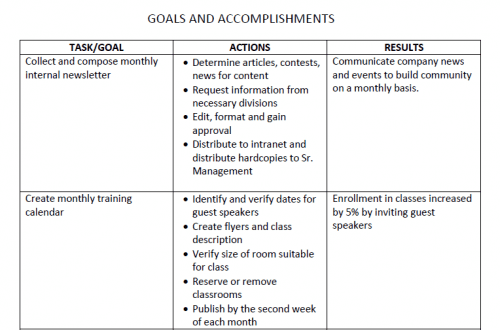If you’ve been working long hours in seclusion, you’ve probably fallen off the radar of people in your network, recruiters and maybe even your manager. Isn’t it time you get noticed and get promoted?
If you want to rise within your organization or get a raise, you not only have to do great work, but people have to know you’ve done it.
It’s sort of like the tree falling in the forest. If no one’s around to hear it fall, does it make a sound? Here are five things you can do to help get noticed and promoted.
Gain Visibility
Visibility is vital to becoming the kind of person who gets promotions, raises, and access to opportunities according to Jeffrey Pfeffer, a professor at Stanford’s Graduate School of Business.
There’s a great article about why some people get promoted over others on 99U. But, as easy as this sounds, it is often difficult to put into action. Most people feel like talking about success is like bragging. Actually, it about taking credit where credit is due.
Does this sound like brown-nosing, playing politics, and unfair? Look around. Who are the people getting promoted in your organization? You don’t have to sacrifice your integrity. You may have to step outside your comfort zone.
Unsaid Goes Unnoticed
Even well-meaning managers have difficulty tracking the team’s individual achievements. It isn’t that they don’t want to notice, but lack time due to a demanding workload, managing crises, and conflicting priorities.
Make it easy for your manager to keep tabs on you by sending a weekly or monthly email update. State what you accomplished in objective, measurable terms. And always try to tie your achievements back to organizational goals or how it benefits the bottom line.
Get Seen
Working long hours or coming in early doesn’t earn you brownie points, especially if no one knows.
If you must work overtime, consider choosing a time of day your manager is around. For example, if your manager is an early-bird, plan to do your work in the morning and arrive early in the day. You may even want to swing by your manager’s office and say a quick ‘good morning.’
Taking on a highly visible project is another way to gain exposure. Look for opportunities to take on an assignment that holds potential for visibility, such as work on a new product or service, revamping a process impacting the company or even a company-sponsored community service project.
And be sure to save samples of work, notes of praise, or other endorsements of your work.
Get Heard
The next time you attend a meeting or event and are asked to introduce yourself, be sure you have a solid pitch. Don’t just state your name and title. Go one step further and add something you are proud of achieving or include a mini-testimonial, for example:
“My name is Jane Doe and I’m in the Sales Support Division. My team says I’m the one who makes their lives easier.”
Most people hate talking about themselves so they rush through their introduction. Please, don’t be that person. This is your chance to sound confident and capable. First impressions are lasting ones!
Here’s a modern twist to the old elevator pitch.
Soft Spoken, No Problem.
If you have difficulty speaking up or broadcasting your achievements, enlist the help of teammates or colleagues. Your peers know you and how you work.
Ask if your coworkers would be willing to help talk up your strengths or even just back you up when you present an idea. Reciprocating this favor is a wise career move that will not go unnoticed.
Document Success
Beginning today, keep track of your achievements using a simple grid. Label three columns: task/goal, actions, and results.
Task/goal is the project or assignment given or that you proactively took on. For example: “collect articles and information for monthly newsletter to share with employees.”
The Actions column identifies the steps you took or the things you did to move toward accomplishing your task/goal. Here is an example of how to summarize actions:
- Determine articles, contests, news for content
- Request information from necessary divisions
- Edit, format and gain approval
- Distribute to intranet and distribute hardcopies to Sr. Management
Results, in the third column, contains the outcome of your actions. For example: “Communicated company news and events to build community among 2,500 employees across four locations on a monthly basis.” Whenever possible, you want to incorporate quantitative results.
Hold on to this log, you’ll need it for your annual review or to back up your case to get promoted. And don’t keep in on your work computer. This is your personal property so keep it separate so you will always have access to it.
Shine During Your Annual Review
Have you had a performance evaluation recently? You should ask for one if it’s been awhile since you and your manager sat down to review how you are stacking up and what your goals are for the future.
The best time to ask for a review is before you want to get promoted.
Sometimes your manager will ask you to complete a form or submit a list of projects you worked on during the year. Trying to remember everything you did over the past 12 months means some achievements will slip through the cracks. And if you don’t mention something, will your manager remember? Unfortunately, we tend to recall recent events and major blunders, which aren’t necessarily the best reflection of you or your work!
Regularly use this easy system to communicate your achievements when you check in with your manager when preparing for your performance evaluations and even to update your LinkedIn profile.
What about visibility outside your company? Here are 15 simple ways to own digital terrain.
Adapted from original post on US News & World Report On Careers

Hannah Morgan speaks and writes about job search and career strategies. She founded CareerSherpa.net to educate professionals on how to maneuver through today’s job search process. Hannah was nominated as a LinkedIn Top Voice in Job Search and Careers and is a regular contributor to US News & World Report. She has been quoted by media outlets, including Forbes, USA Today, Money Magazine, Huffington Post, as well as many other publications. She is also author of The Infographic Resume and co-author of Social Networking for Business Success.


